How To Add More Flavor to Homemade Bread
Sneak Preview: Here are ten tips to help you elevate the flavor of your homemade bread. These apply whether you make your bread with the help of a bread machine, stand mixer, or manually.
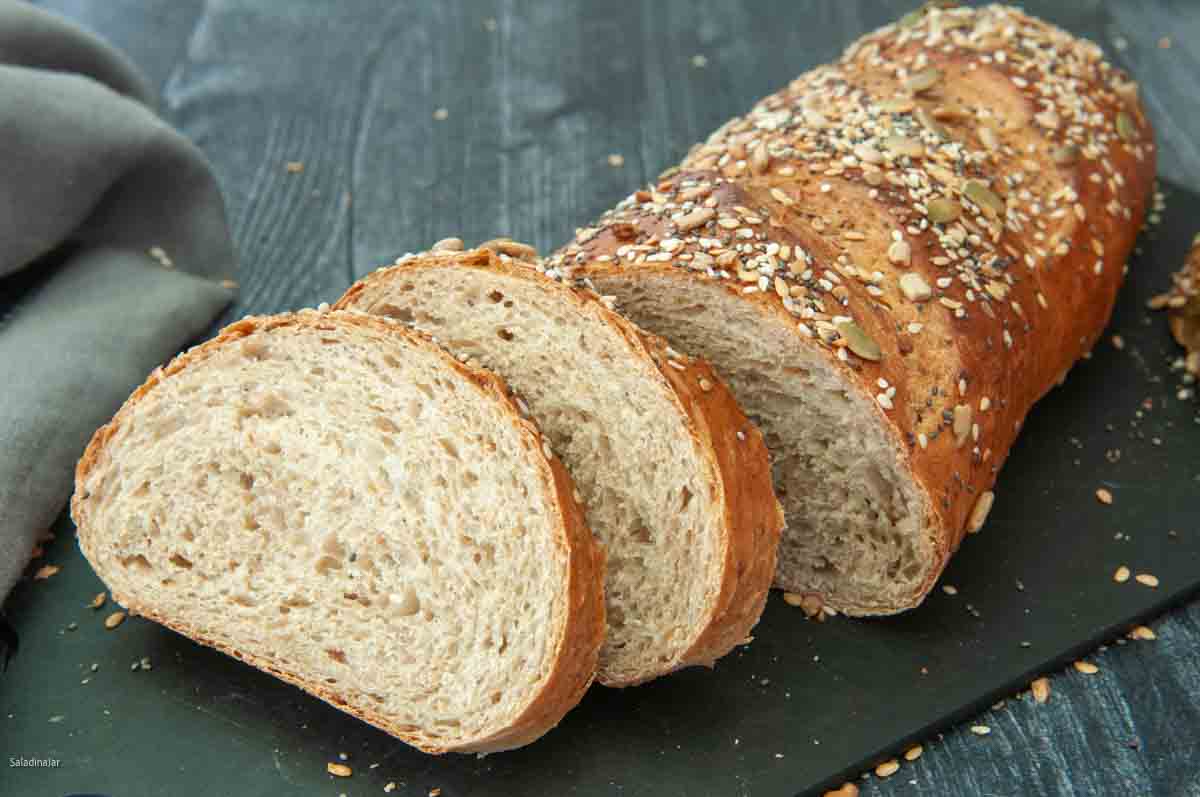
As an Amazon Associate, I earn from qualifying purchases.
If you have been disappointed in the flavor of your bread, whether made with a bread machine or otherwise, I have some insights and ideas for you.
But first, a story…

A Tale of Two Trees
We have many beautiful oak trees in our neighborhood, along with a few fast-growing cottonwood trees. I’m sure these trees have their place in nature somewhere in the world, but they don’t belong in a North Texas landscape. These junky trees spend all their energy to grow as fast as they can. Their use as street or landscape trees is limited by their shallow root system, weak wood, messy ‘cotton’ of female trees, and the fact that they are relatively short-lived (30-60 years).
In contrast, consider our long-standing oak trees. They grow slowly, allowing the natural process of growth to unfold at its own pace. Nutrients and sunlight work together to nurture them, resulting in leaves that, though late to appear, are vibrant, beautiful, and finely textured.
While we continue to enjoy our beautiful oaks, the cottonwoods, unfortunately, quickly exhaust themselves. They are costly to remove, often after causing problems like clogged air conditioning units and pool filters, not to mention the large branches prone to break off during our storms.
These trees offer a valuable lesson for baking bread. Allowing dough to rise and develop slowly leads to more complex flavors and a superior texture.
Time is a critical factor in nature for achieving extraordinary results, and this is especially true in bread making, where working with yeast is essentially working with nature.
This brings us to the number one way to make more flavorful bread.
1. Slow Down the Fermentation Process
Like the beautiful oak in my story, extraordinary results take time! The first three tips are about ways to build more time into the breadmaking process.
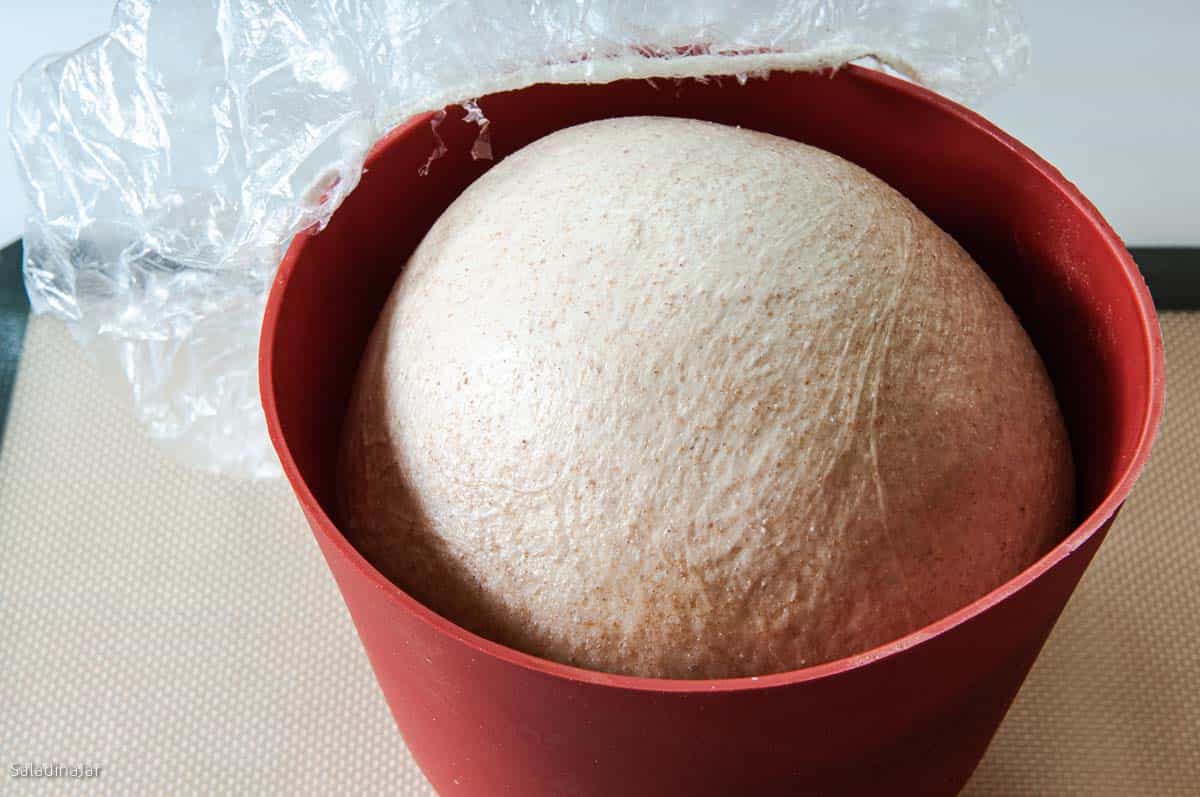
Ways to slow down the rising period or fermentation:
Fermentation is primarily affected by temperature, though the amount of yeast and other recipe ingredients also play significant roles.
- Consider fermenting your dough in the refrigerator overnight.
- Prepare your dough using the DOUGH cycle of a bread machine, a stand mixer, or by hand.
- Once the cycle is complete or your dough rises to double the original size, gently deflate it and shape it into a ball.
- Place this ball in a large, greased bowl, ensuring ample space for rising. Cover the bowl and refrigerate.
- Later in the day or the next morning, remove the dough, shape it, and allow it to nearly double in size before baking.
- Avoid proofing dough at temperatures higher than 75-78˚F.
- If using your oven’s proofing cycle, check the temperature. The lowest setting on my oven is 85˚F, which is a bit high unless you’re in a rush, such as expecting the President for dinner within an hour.
- In summer, you might need to move the dough from the bread machine to a cooler spot if your house is too warm, slowing down the rising process.
- In winter, cold temperatures often tempt us to move the bread machine or the dough to a warm place. Don’t place your dough too close to anything hot, like a wood-burning stove. If you have a quick-read digital thermometer (paid link), this is a great time to check the temperature wherever you plan to let your bread rise.
- Avoid using the QUICK DOUGH cycle on your bread machine, as it doesn’t provide enough time for flavor development.
2. Decrease the yeast
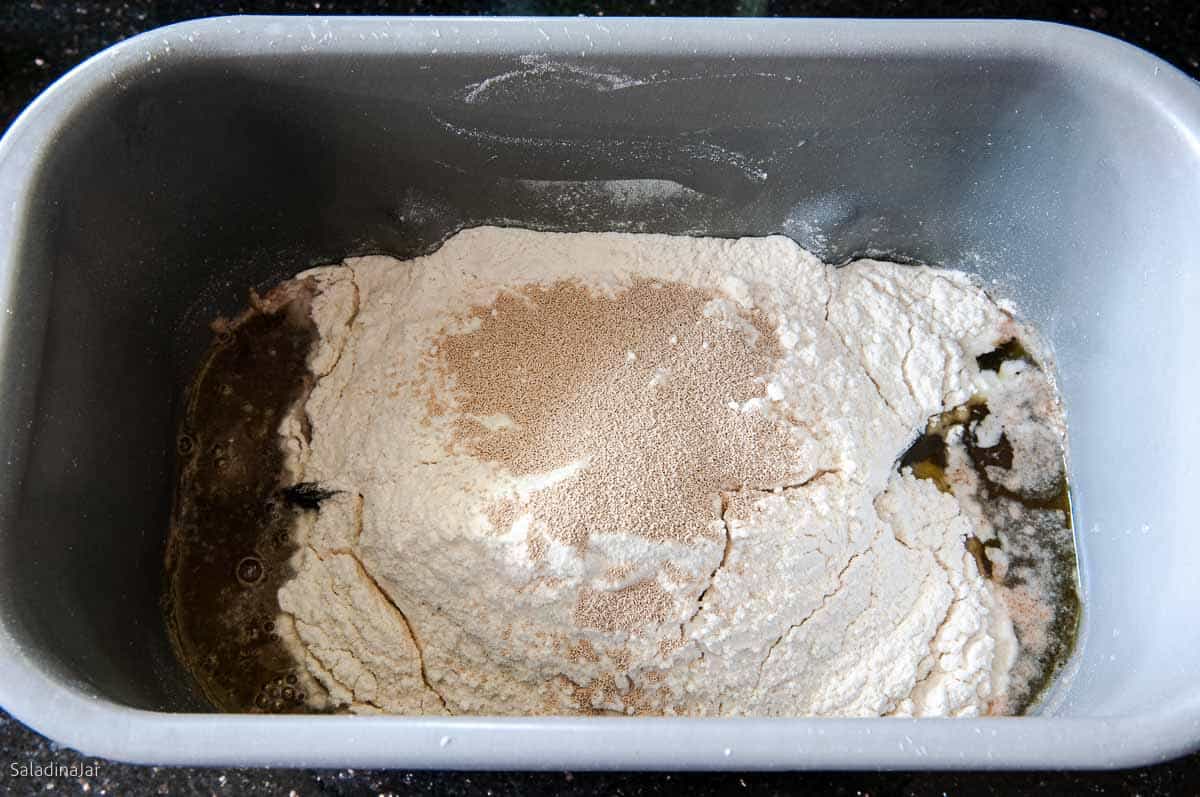
Adding more yeast does not increase the yeast flavor. It only serves to make the dough rise faster, which is unnecessary and counterproductive. (See #1)
Older bread recipes usually specify one package of active dry yeast (2¼ teaspoons) for every three cups of flour or two packages for six cups of flour. You don’t need that much with the new formulations and a better understanding of making good bread. Try reducing the amount by half, especially when baking lean bread (no eggs and minimal fat or sugar).
Any time you use the more potent instant yeast (perfect for use with a bread machine), use less, at least a half teaspoon less than active dry yeast.
3. Experiment With Pre-ferments
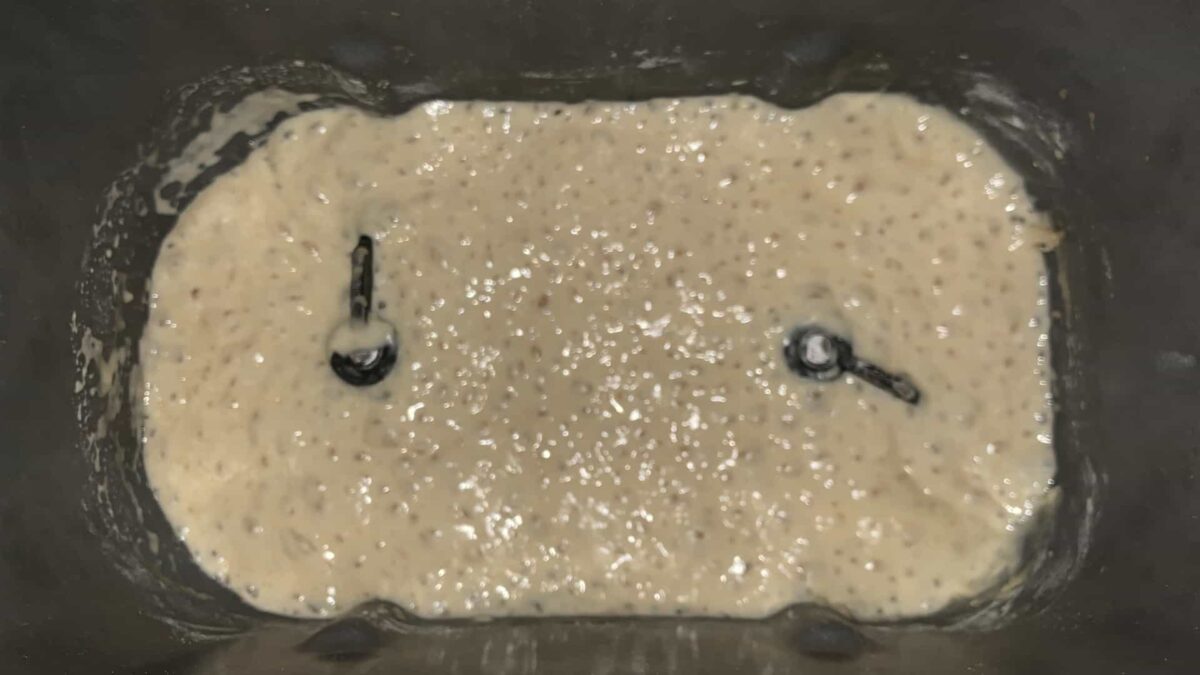
A pre-ferment consists of flour, water, and a minimal amount of yeast. For convenience, mix these in a bread machine and let the mixture sit for several hours, or even overnight. When you’re ready to make the dough, simply add the remaining ingredients and begin the DOUGH cycle. This process leads to a richer, more complex flavor in the final bread.
See examples of pre-ferments in these recipes:
- How To Make a Hearty Rye Bread Recipe (Bread Machine)
- Ridiculously Easy Cuban Bread You Can Mix with a Bread Machine
- How To Make a Beautiful Ciabatta (Bread Machine) +Video
- Crusty Bread Machine Recipe
4. Add Flavorful Ingredients
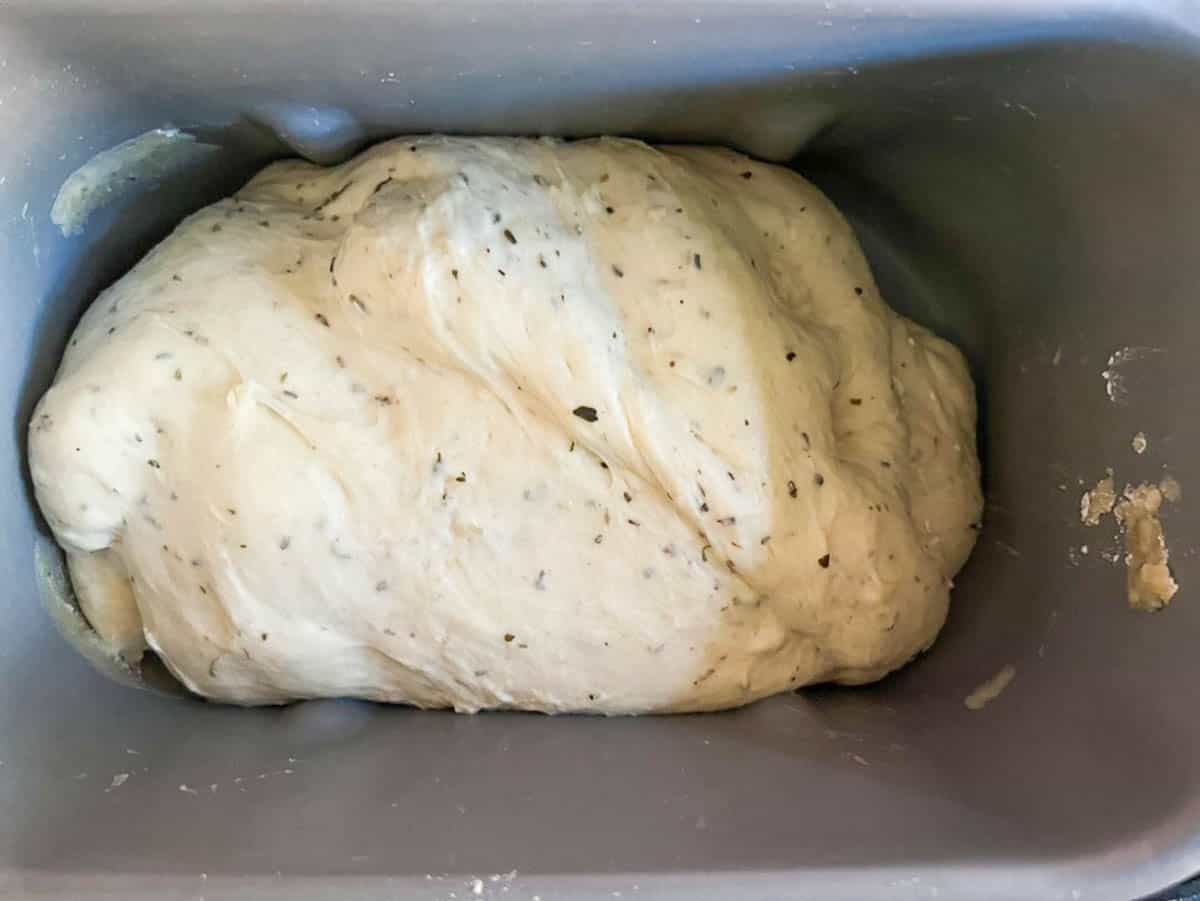
The list is endless. Here are a few ideas to get you started.
- Cheese
- Seeds
- Nuts
- Herbs
- Olives
- Dried Fruit
- Fresh Fruit
Three ways to add ingredients
1) For ingredients like mashed bananas that you want to blend in with the bread, add them with the other ingredients before starting the DOUGH cycle.
2) To preserve the integrity and distinctiveness of ingredients like cheese, raisins, and nuts, incorporate them into the dough during the last five minutes of the DOUGH cycle.
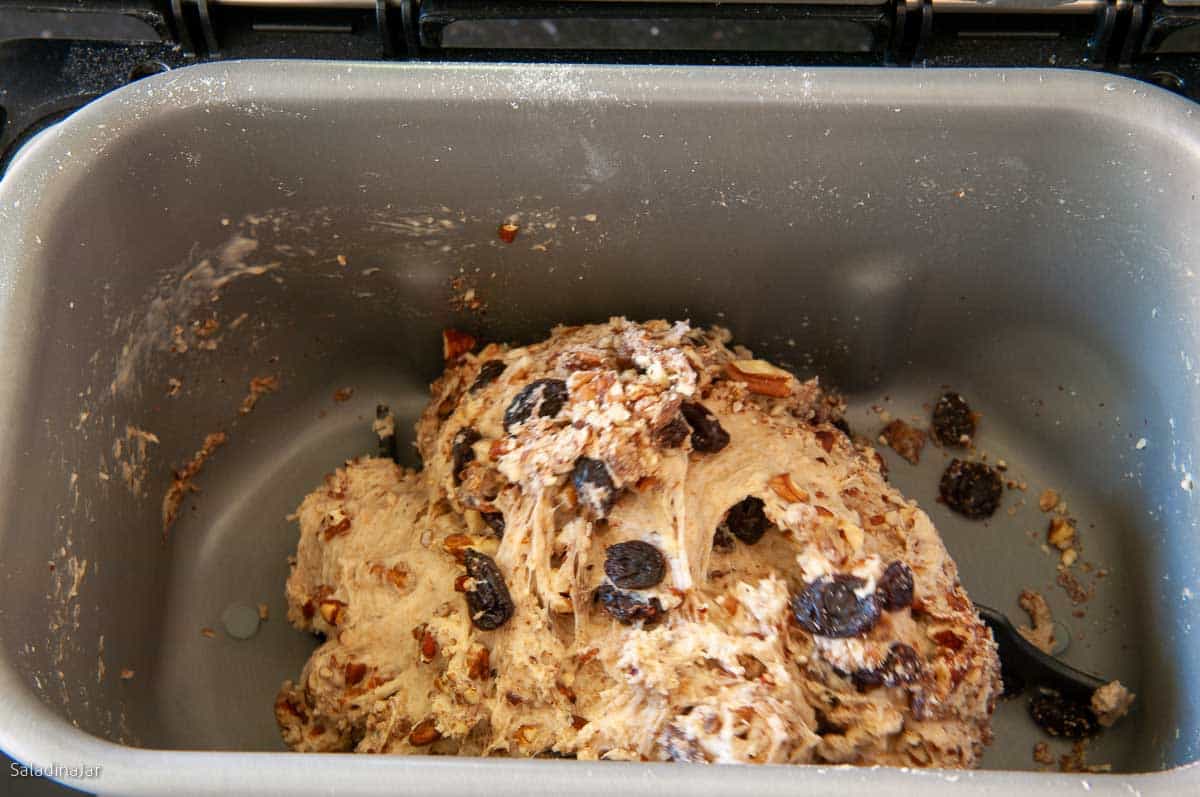
3) If you forget to add them to the bread machine, it’s not an issue. Simply knead them gently into the dough by hand while shaping it after the DOUGH cycle. This method works well for herbs or small chocolate pieces as well.
5. Use the Freshest and Best Quality Ingredients You Can Find and/or Afford
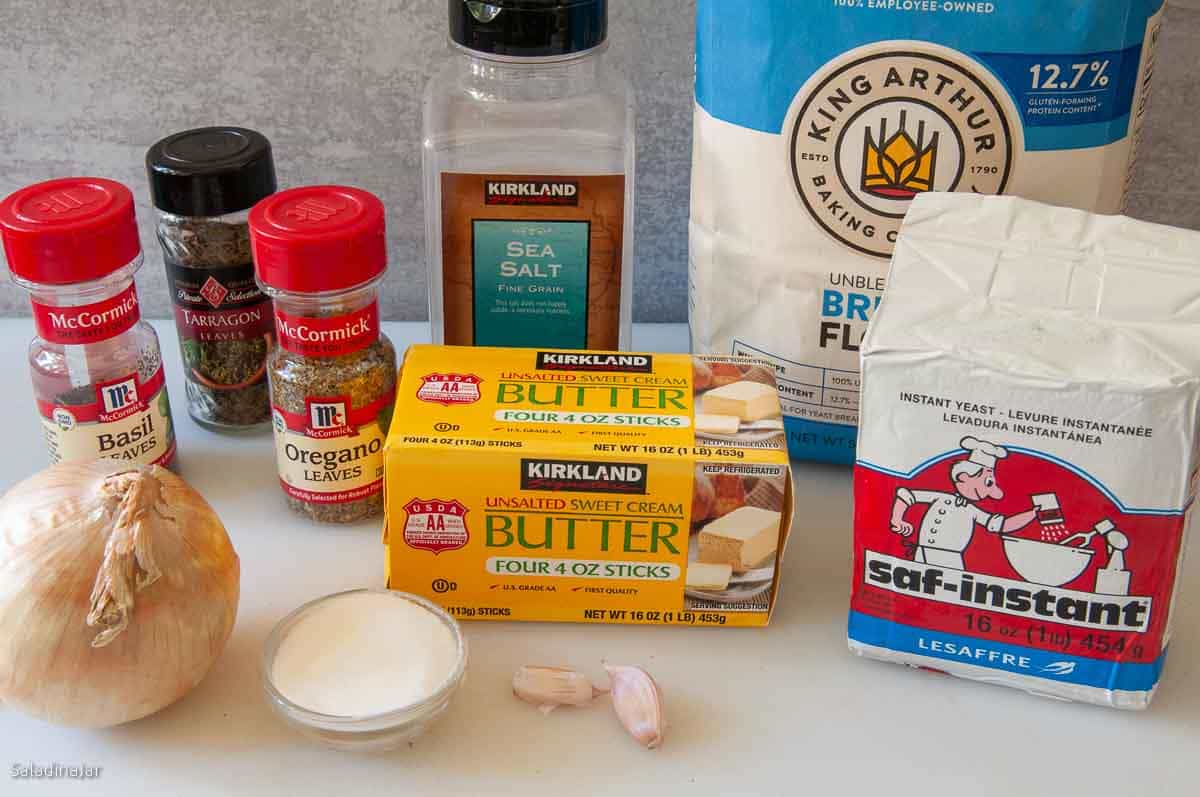
White flour has a shorter shelf life than you might expect, so always check its expiration date. Store whole grain flours like whole wheat, rye, and spelt in the refrigerator to prevent them from going rancid. For an exceptionally fresh flavor, consider grinding your own flour—this is something I plan to explore in 2024.
Remember, freshness matters.
6. Don’t Skimp on the Salt
If you are watching your salt intake, see this post for cutting back salt in bread(Focus on #4.) Otherwise, salt makes a huge difference in the taste. For three cups of flour, I usually start with one teaspoon and adjust upward for the best taste.
7. Use a Sourdough Starter or Starter Discard
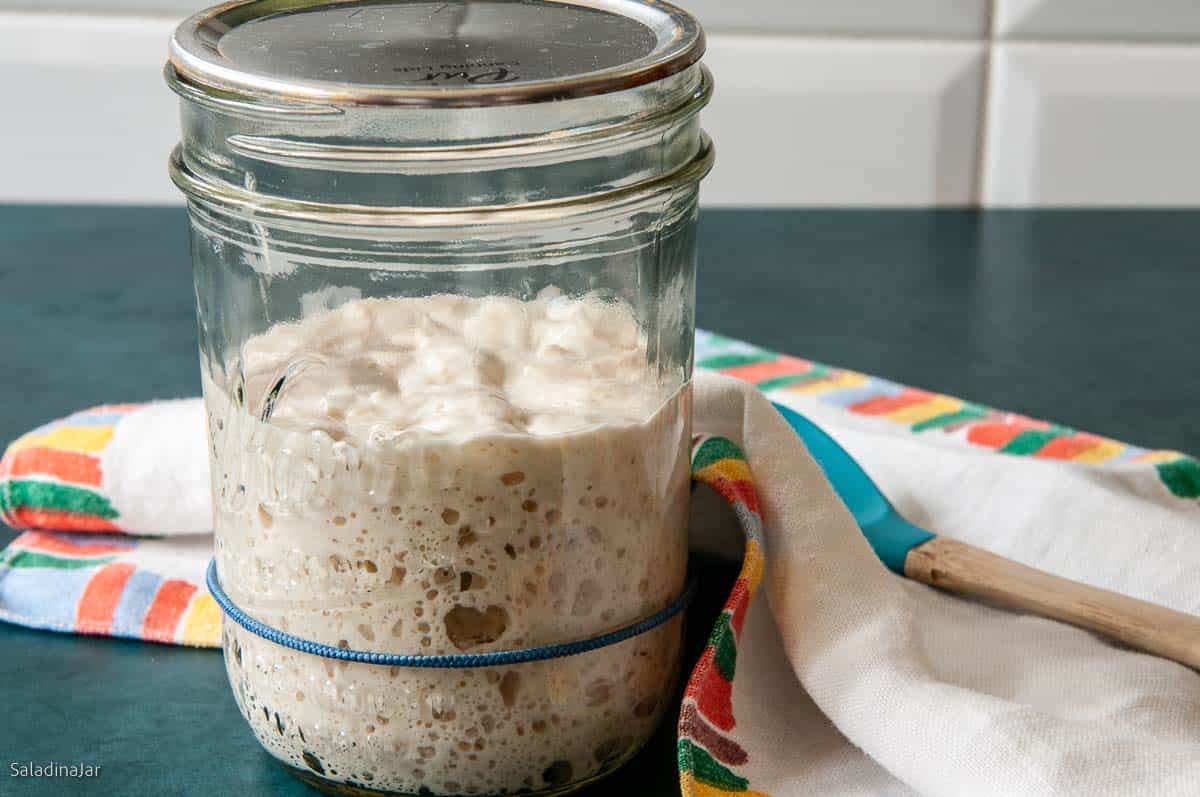
Sourdough starter lends all kinds of complexity to bread flavor. See these recipes formulated for use in a bread machine.
- Sourdough Bread Machine Bread: A Simple Loaf Good for Sandwiches
- Yes! Make Sourdough Bread (Without Yeast) Using a Bread Machine
- Baking Sourdough Dinner Rolls with the Bread Machine Advantage
8. Experiment With Your Baking Method
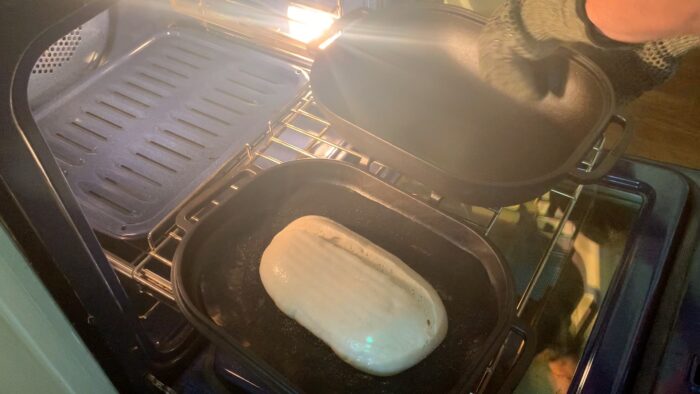
- Enhance your lean bread’s crust flavor by baking it in a Dutch oven or a similar enclosed container.
- Another great option is baking on a pizza stone.
- If you typically use a bread machine, consider switching to the DOUGH cycle, then shape the bread by hand and bake it in a conventional oven.
- For optimal browning and crust flavor, invest in high-quality pans. I recommend USA Pans (paid link) for their excellent results.
- I don’t prefer to bake bread in glass pans. The dough gets hotter and tends to dry the bread, especially in the corners. When using glass, always decrease the oven temperature by 25˚F.
9. Try Different Glazes
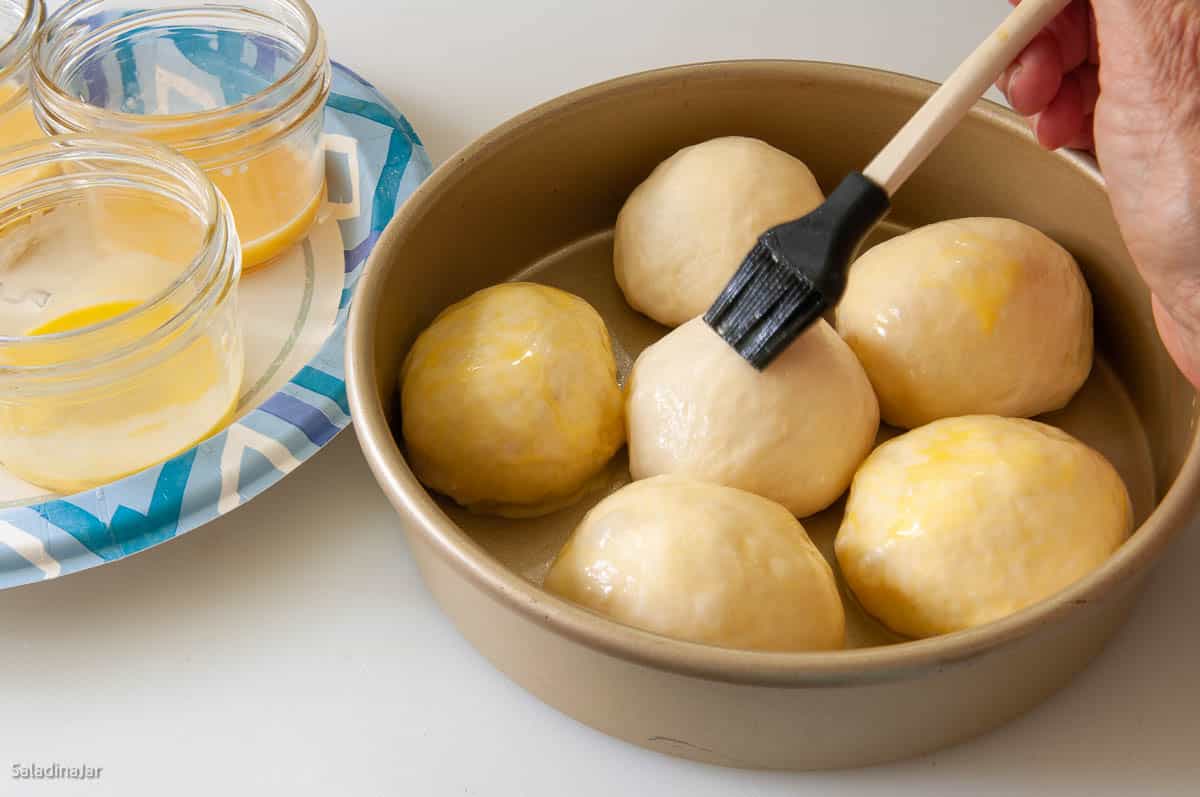
Prior to baking, try brushing various glazes to not only change the appearance but to add flavor. Glazes can also serve as “glue” for seeds, spices, coarse sugar, or salt. Or, add sweetness and shine with a sugar glaze or honey butter.
10. Underproofing or Overproofing Will Ruin the Flavor of Your Bread
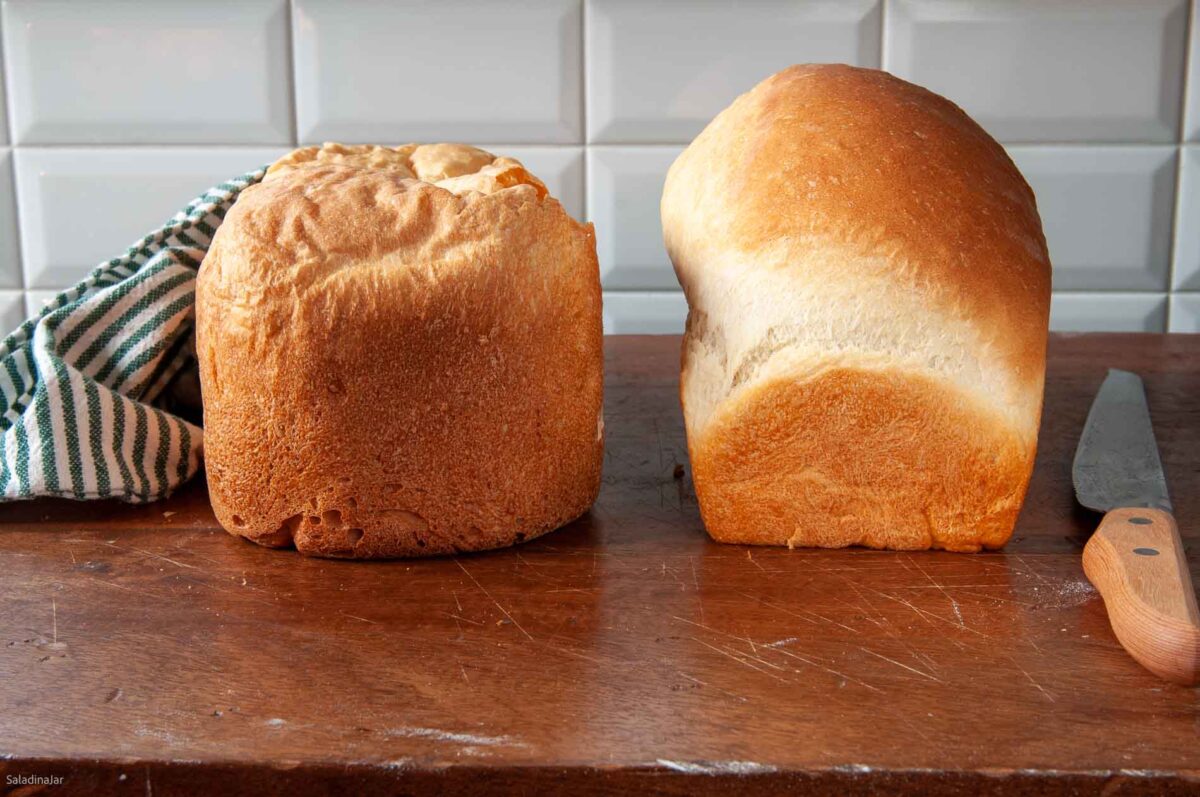
Under-proofing means there is less time for the fermentation process, resulting in a less complex flavor and a weaker flavor profile. In some cases, the bread may be slightly more acidic or have a pronounced yeast flavor.
Over-proofing exhausts the dough, leaving you with a bland, off-flavor, not to mention a volcano or flat top. This often happens when using a bread machine to both mix and bake your bread. A computer can’t recognize when conditions are less than optimal for proofing bread.
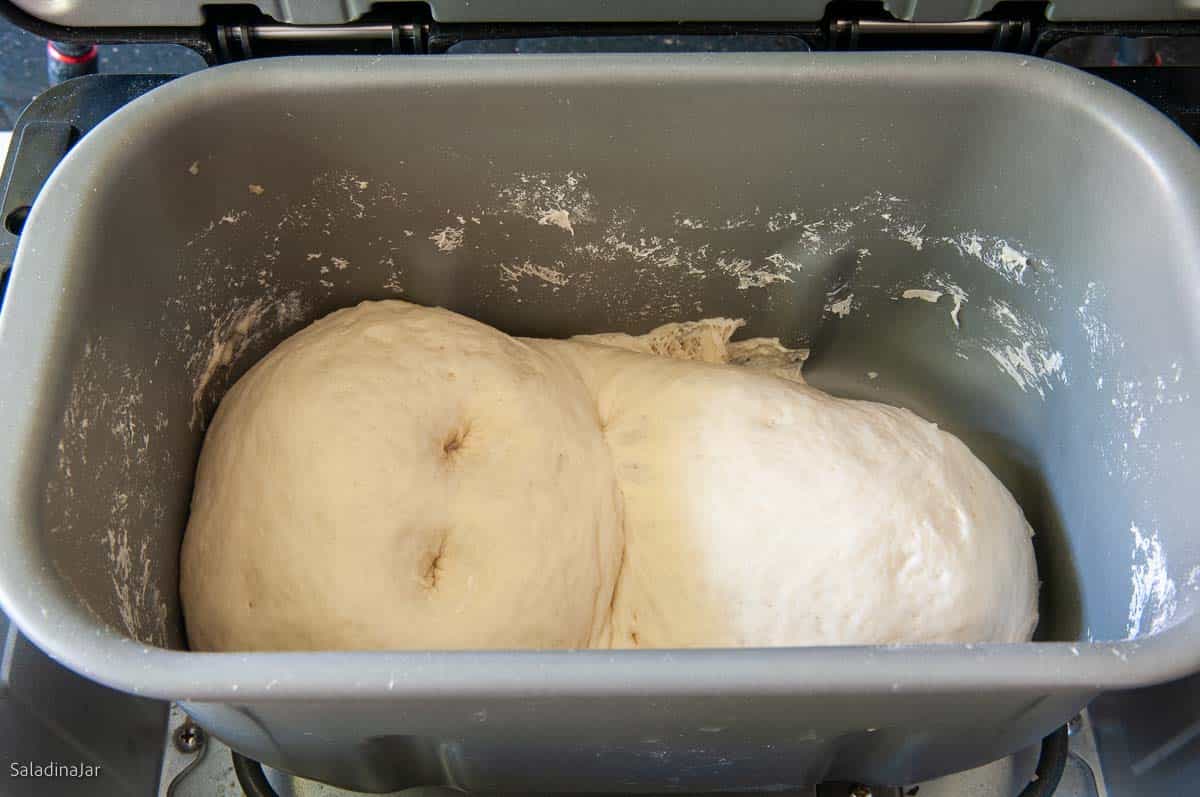
Parting thoughts: Improving the flavor of your homemade bread boils down to time, exploring different baking techniques, and considering the amount and quality of your ingredients. Be willing to try new things while paying attention to the details.
If you have questions or suggestions, email me privately for a quick answer: Paula at saladinajar.com. Hope to see you again soon!
a Paula-ism
Making fabulous bread is not as easy as throwing together a pan of brownies. When live organisms (yeast) are involved, you’ve got to play by their rules.


Paula Rhodes, owner
As a retired home economist, I created Saladinajar.com to share my belief that you don’t have to be a chef to find joy in creating homemade food worth sharing. Bread machines (used in an unconventional way), homemade yogurt, and quick microwave recipes are my specialty.